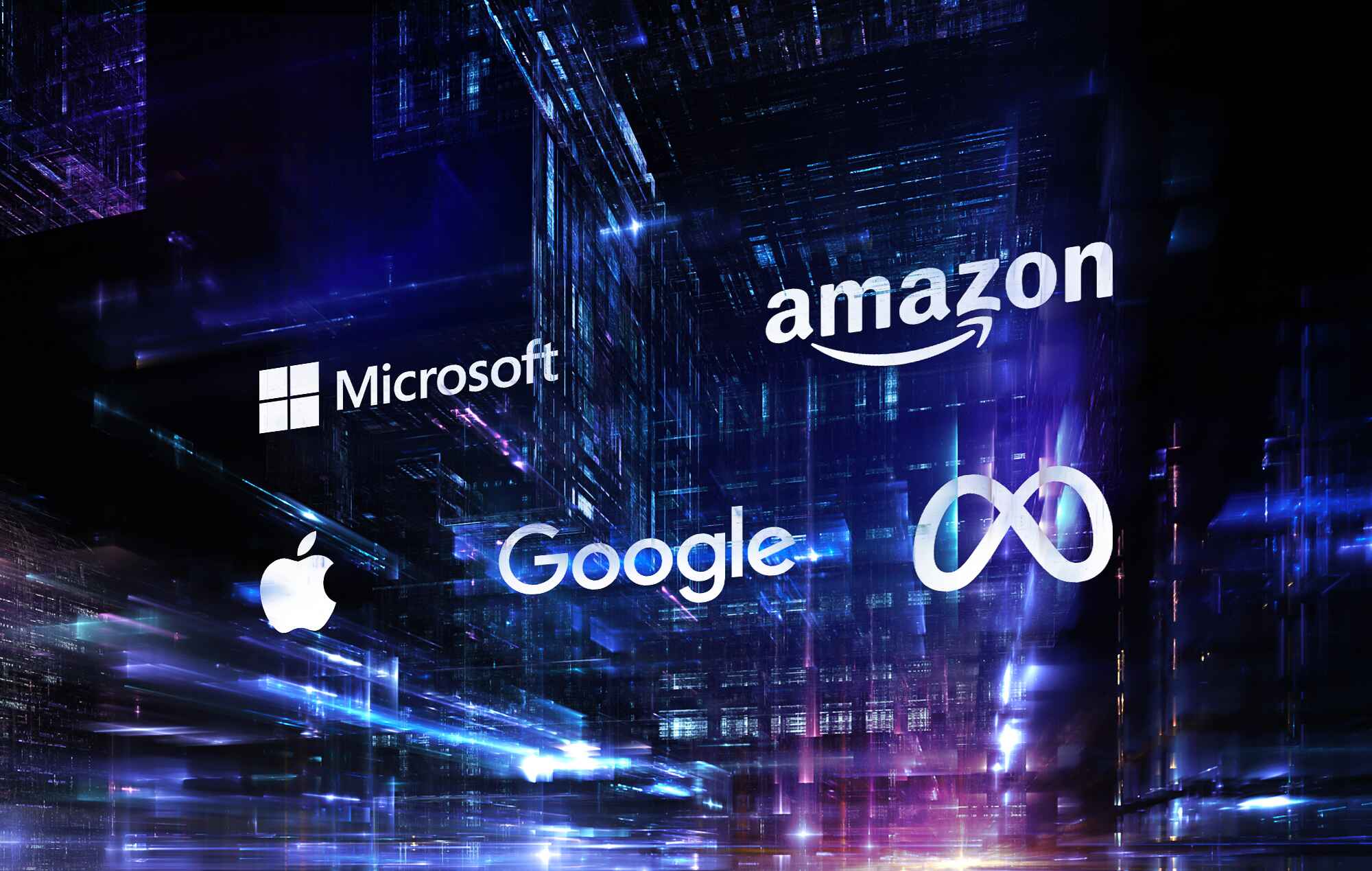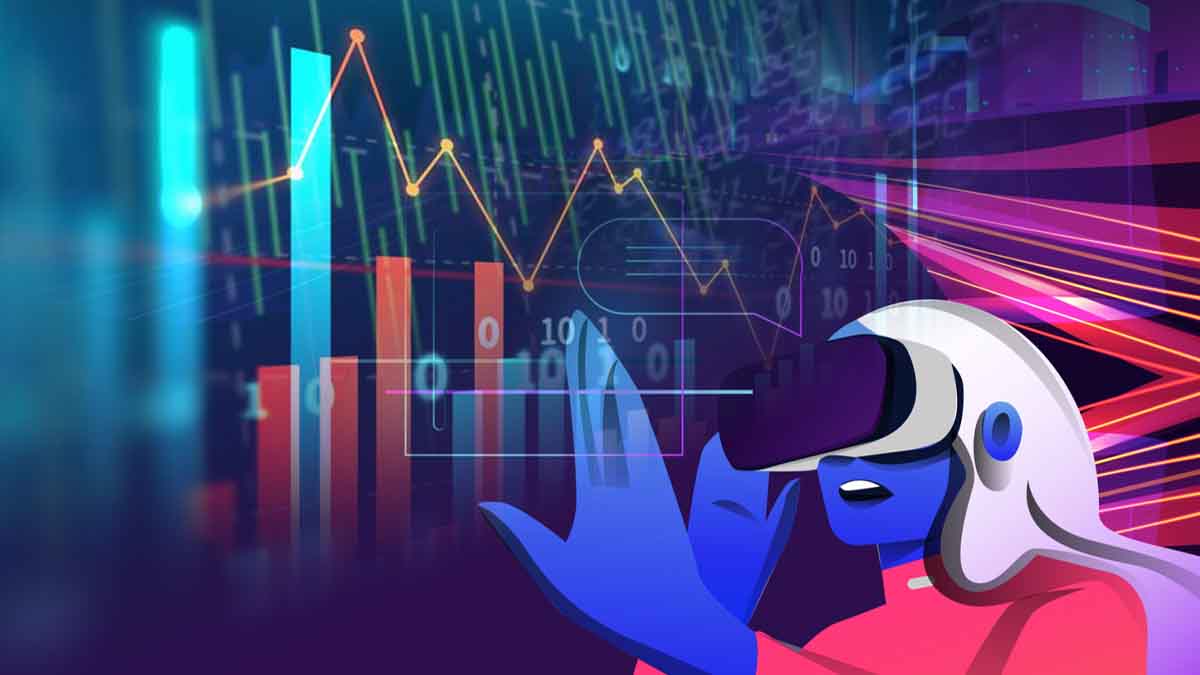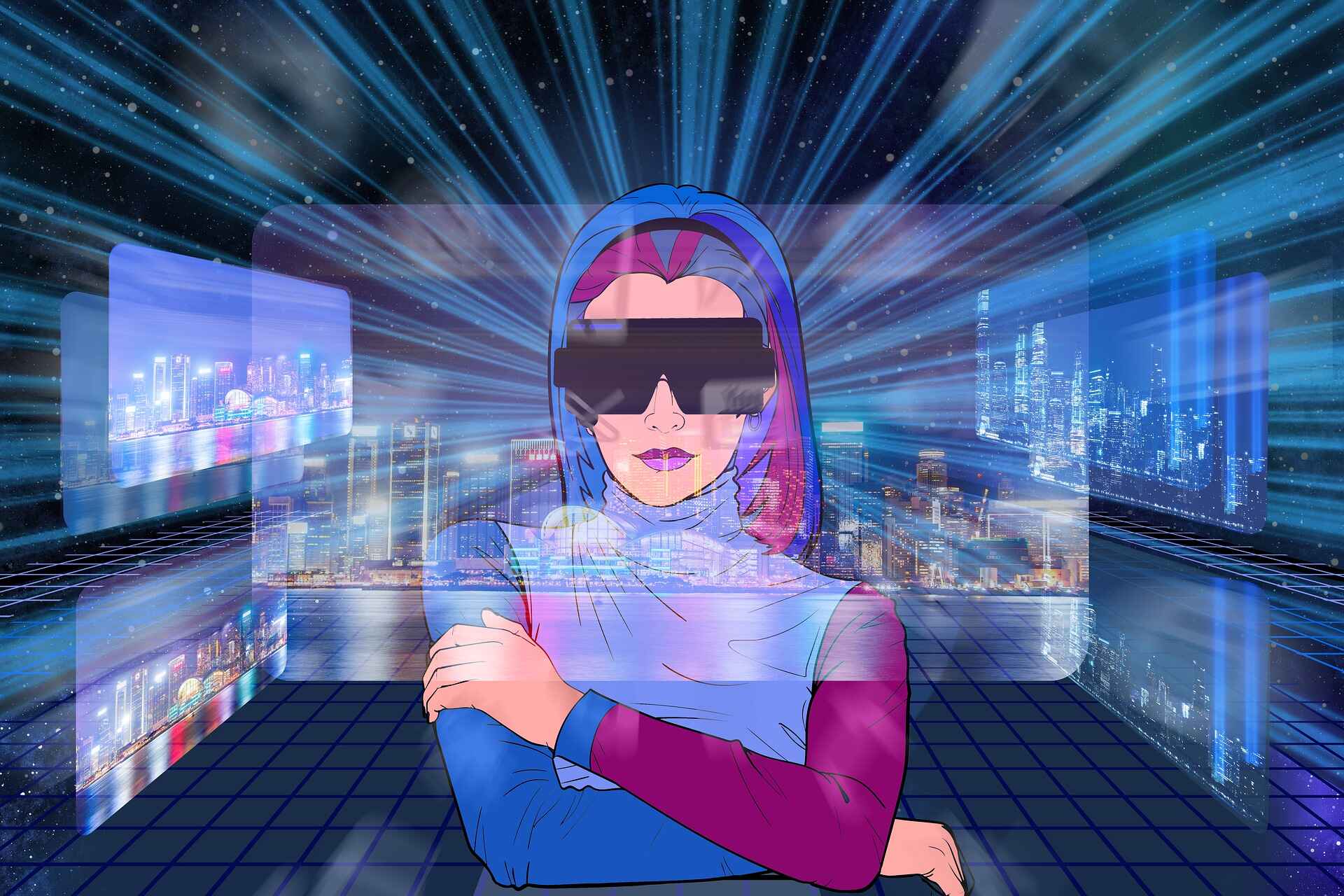Introduction
Welcome to the world of the metaverse, where virtual and physical realities seamlessly blend together to create immersive experiences. In recent years, the concept of the metaverse has gained significant attention, captivating the imaginations of both technology enthusiasts and businesses alike.
The metaverse can be described as a collective virtual shared space, where users can interact with each other and the environment in real-time. It goes beyond traditional virtual reality, offering a more comprehensive and interconnected digital universe. In the metaverse, users can explore virtual worlds, create personalized avatars, engage in social activities, play games, attend events, and even conduct businesses, all within a simulated environment.
With emerging technologies such as augmented reality (AR), virtual reality (VR), artificial intelligence (AI), blockchain, and cloud computing, the possibilities within the metaverse are becoming increasingly exciting and limitless. Companies are harnessing the potential of the metaverse to revolutionize industries, connect communities, and transform how we live, work, and play.
As the metaverse garners more attention, it is rapidly transforming from a mere concept into a tangible reality. Companies across various sectors are investing in metaverse development, creating diverse opportunities for innovation and growth.
In this article, we will explore the metaverse in detail, discussing its features, characteristics, and the impact it has on businesses and society. We’ll also delve into examples of metaverse companies that are driving this technological revolution forward.
So, fasten your seatbelts and get ready to dive into the metaverse, a captivating virtual realm where the only limit is your imagination.
Definition and Overview
The metaverse is commonly defined as a collective virtual shared space that encompasses a wide range of digital experiences and interactions. It transcends the boundaries of individual virtual reality experiences and connects them into a cohesive and interconnected digital universe.
At its core, the metaverse is built upon the convergence of various technologies, including augmented reality (AR), virtual reality (VR), artificial intelligence (AI), blockchain, and cloud computing. These technologies work together to create a seamless and immersive digital environment that users can access through their devices, such as smartphones, computers, or specialized headsets.
In the metaverse, users can explore virtual worlds, interact with other users, manipulate digital objects, and engage in a wide array of activities. It is a place where people can socialize, collaborate, learn, play games, attend virtual events, buy and sell virtual assets, and even conduct business transactions.
One of the defining features of the metaverse is its persistence. Unlike traditional virtual reality experiences that exist within isolated simulations, the metaverse offers a continuous and interconnected virtual space. This means that changes made by one user can be seen and experienced by others, creating a sense of shared reality.
Furthermore, the metaverse is not limited to a single platform or application. It is an open and interoperable environment that allows users to seamlessly transition between different virtual worlds and experiences. This interoperability enables the integration of various digital assets, currencies, and services, providing users with a cohesive and unified experience across different metaverse platforms.
Overall, the metaverse represents a paradigm shift in how we interact with digital content and engage with others in virtual spaces. It has the potential to reshape industries such as entertainment, gaming, e-commerce, education, healthcare, and more. As technology continues to advance and more companies invest in metaverse development, we can expect to see even greater integration between the physical and virtual realms.
Now that we have a basic understanding of the metaverse, let’s dive deeper into its features, characteristics, and the impact it has on our lives.
Features and Characteristics
The metaverse is characterized by a set of features that make it distinct from traditional virtual reality experiences. These features contribute to the immersive and interconnected nature of the metaverse, offering users a unique and engaging digital environment. Let’s explore some of the key features and characteristics of the metaverse:
- Immersive Virtual Worlds: The metaverse consists of virtual worlds that are highly immersive and realistic. Users can explore these worlds through their avatars, experiencing a sense of presence and interaction with the digital environment.
- Real-Time Interactivity: In the metaverse, users can interact with other users and the virtual environment in real-time. This enables socialization, collaboration, and shared experiences within the digital space.
- Open and Interoperable: The metaverse is not confined to a single platform or application. It is an open ecosystem that allows for interoperability between different virtual worlds and experiences. Users can seamlessly transition between platforms and carry their digital assets and identities with them.
- User-Created Content: The metaverse encourages and empowers users to create and contribute their own content. Users can design virtual spaces, create digital assets, develop applications, and even monetize their creations within the metaverse.
- Economy and Commerce: The metaverse has its own economy, with virtual currencies and assets that can be bought, sold, and traded. Companies can establish virtual stores and conduct e-commerce transactions, expanding the possibilities for business within the metaverse.
- Decentralized and Trustworthy: With the use of blockchain technology, the metaverse offers a decentralized and transparent infrastructure. This ensures trust and security in digital transactions, ownership of assets, and identity verification.
- Continuity and Persistence: Unlike traditional virtual reality experiences that exist within isolated simulations, the metaverse provides continuity and persistence. Changes made by users are perceived by others, creating a shared and evolving virtual reality.
These features and characteristics of the metaverse contribute to its potential as a transformative technology, with applications ranging from entertainment and gaming to education, healthcare, and beyond. As companies continue to innovate and explore the possibilities within the metaverse, we can expect new and exciting developments in the years to come.
Examples of Metaverse Companies
The metaverse is rapidly gaining traction, with several companies leading the way in its development and utilization. These companies are harnessing emerging technologies and pushing the boundaries of what is possible within the digital realm. Let’s take a look at some notable examples of metaverse companies:
- Roblox: Roblox is a platform that allows users to create and play games, as well as socialize with others in virtual worlds. With its user-generated content model, Roblox has built a thriving metaverse community where developers can monetize their creations and users can enjoy a wide range of virtual experiences.
- Decentraland: Decentraland is a blockchain-based virtual reality platform that offers users the ability to own, trade, and develop virtual land and assets. It combines blockchain technology with VR, allowing users to explore and interact with a decentralized metaverse where ownership and control belong to the users themselves.
- Meta (formerly Facebook Reality Labs): Meta is a leading player in the metaverse space, aiming to build a connected, immersive, and social digital world. With the advancements in AR and VR technologies, Meta envisions a metaverse where users can seamlessly interact with each other and digital content, blurring the line between the physical and virtual realms.
- Niantic: Niantic is known for developing popular augmented reality games like Pokemon Go and Ingress. These games have introduced millions of players to the concept of the metaverse, where virtual elements are overlaid onto the real world. Niantic continues to innovate and expand its metaverse offerings, creating new and engaging experiences for users.
- Epic Games: Epic Games, the creator of Fortnite, is a prominent player in the metaverse space. With its virtual concert events and immersive gaming experiences, Epic Games has shown the potential for the metaverse to be a hub for entertainment, socialization, and cultural events.
- Mojang Studios (Microsoft-owned): Mojang Studios, the creator of Minecraft, has established a metaverse-like environment where players can build and explore their own virtual worlds. Minecraft’s creative gameplay and community-driven content make it a prominent example of the metaverse’s potential for user-generated virtual experiences.
These are just a few examples of metaverse companies that are shaping the digital landscape and paving the way for the future of immersive virtual experiences. The metaverse provides a platform for innovation and creativity, and we can expect to see even more companies entering the metaverse space and exploring its vast potential.
Importance and Impact
The metaverse holds great importance and has a profound impact on various aspects of our lives, ranging from entertainment and communication to commerce and education. Let’s delve into some of the key areas where the metaverse is making its mark:
1. Enhanced Digital Experiences: The metaverse enhances our digital experiences by providing immersive and interactive virtual environments. Whether it’s attending virtual concerts, exploring virtual museums, or playing games with friends across the globe, the metaverse enriches our entertainment options and brings people closer together in new and exciting ways.
2. Economic Opportunities: The metaverse creates new economic opportunities by enabling virtual commerce and entrepreneurship. Users can buy, sell, and trade virtual assets, while developers can monetize their creations. This opens up avenues for business growth and innovation, leading to the emergence of new industries within the metaverse ecosystem.
3. Social Connectivity: The metaverse fosters social connectivity by allowing users to interact with others in virtual spaces. People can connect with friends, family, and colleagues, regardless of geographical barriers. It also promotes inclusivity, as users have the freedom to express themselves through their avatars and form communities based on shared interests and passions.
4. Educational Advancements: The metaverse offers new possibilities for education and learning. Virtual classrooms and interactive simulations provide immersive learning experiences that engage students in a more dynamic and personalized way. It also allows individuals from different parts of the world to access educational resources and collaborate on projects, regardless of physical location.
5. Cultural and Artistic Expression: The metaverse serves as a platform for cultural and artistic expression. Artists can showcase their work, musicians can perform virtual concerts, and designers can create immersive architectural experiences. The metaverse enables the preservation and transmission of cultural heritage, while also pushing boundaries and exploring new forms of expression.
6. Technological Advancements: The metaverse drives technological advancements in areas such as augmented reality, virtual reality, artificial intelligence, blockchain, and more. Companies invest in research and development, pushing the boundaries of what is possible within the digital realm. These technological advancements and innovations influenced by the metaverse have the potential to impact various industries and shape the future of technology.
The metaverse is revolutionizing the way we interact with digital content, connect with others, and experience the world around us. Its impact goes beyond entertainment and gaming, extending into fields such as business, education, healthcare, and beyond. As more companies join the metaverse revolution and advancements in technology continue, the potential for even greater impact grows exponentially.
Challenges and Concerns
While the metaverse holds immense potential, it also poses certain challenges and concerns that need to be addressed. These challenges revolve around various aspects, including privacy, accessibility, ethics, and security. Let’s explore some of the key challenges and concerns associated with the metaverse:
1. Privacy and Data Security: As the metaverse collects substantial amounts of user data, there is a need for robust privacy measures. Concerns arise regarding the collection, storage, and use of personal information within the metaverse. Safeguarding user privacy and ensuring data security is crucial to prevent unauthorized access or misuse of sensitive information.
2. Inclusivity and Accessibility: Creating an inclusive metaverse that accommodates users of all abilities and backgrounds is essential. Ensuring accessibility for individuals with disabilities, those from marginalized communities, and those with limited technological resources is a challenge that needs to be addressed. The metaverse should strive to be a space that is accessible to people from diverse backgrounds.
3. Content Moderation and Safety: Managing user-generated content within the metaverse presents challenges related to content moderation and safety. Striking a balance between fostering creativity and maintaining a safe environment free from harmful or inappropriate content is vital. Implementing effective content moderation systems and providing robust user safety measures are crucial concerns.
4. Ethical Considerations: The metaverse raises ethical questions regarding the use of AI, surveillance, and data manipulation. Ensuring the responsible development and deployment of technology within the metaverse is important to uphold ethical standards. Issues such as digital identity, consent, and the potential for addiction also need to be carefully addressed.
5. Economic Disparities: The metaverse could exacerbate existing economic disparities, creating a digital divide where access and opportunities are limited to certain individuals or groups. Ensuring equitable participation and addressing issues of affordability and accessibility is important to prevent the metaverse from exacerbating societal inequalities.
6. Legal and Regulatory Frameworks: The development of the metaverse requires the establishment of legal and regulatory frameworks that ensure consumer protection, intellectual property rights, and fair competition. Developing regulations that evolve with the fast-paced nature of the metaverse is a challenge, but it is essential to provide a stable environment for innovation and protect user rights.
Addressing these challenges and concerns is crucial in maximizing the potential benefits of the metaverse while mitigating potential risks. Collaboration between technology companies, policymakers, and user communities is vital to create a metaverse that is safe, inclusive, and beneficial for all.
Conclusion
The metaverse is not just a futuristic concept; it is becoming a tangible reality that is transforming the way we interact with digital content and connect with others. With its immersive virtual worlds, real-time interactivity, and open ecosystem, the metaverse offers exciting possibilities for entertainment, commerce, education, and more.
As we have explored in this article, the metaverse holds immense importance and has a profound impact on various aspects of our lives. It enhances our digital experiences, creates economic opportunities, fosters social connectivity, advances education, allows for cultural expression, and drives technological innovations.
However, the metaverse also presents challenges and concerns that need to be addressed. Safeguarding user privacy and data security, ensuring inclusivity and accessibility, implementing effective content moderation, addressing ethical considerations, mitigating economic disparities, and establishing legal and regulatory frameworks are among the key challenges that require attention.
As the metaverse continues to evolve, collaboration and dialogue between technology companies, policymakers, and user communities are crucial. By working together, we can ensure that the metaverse develops in a way that is safe, inclusive, and beneficial for all users.
The journey into the metaverse is an exciting one, full of endless possibilities and untapped potential. As technology advances and companies invest in metaverse development, we can expect to see a future where the physical and virtual realms seamlessly intertwine, creating a new era of digital experiences and interactions.
So, fasten your seatbelts, embrace the possibilities, and get ready to explore the metaverse, where boundaries are blurred, where imagination is the only limit, and where a whole new world awaits.

























